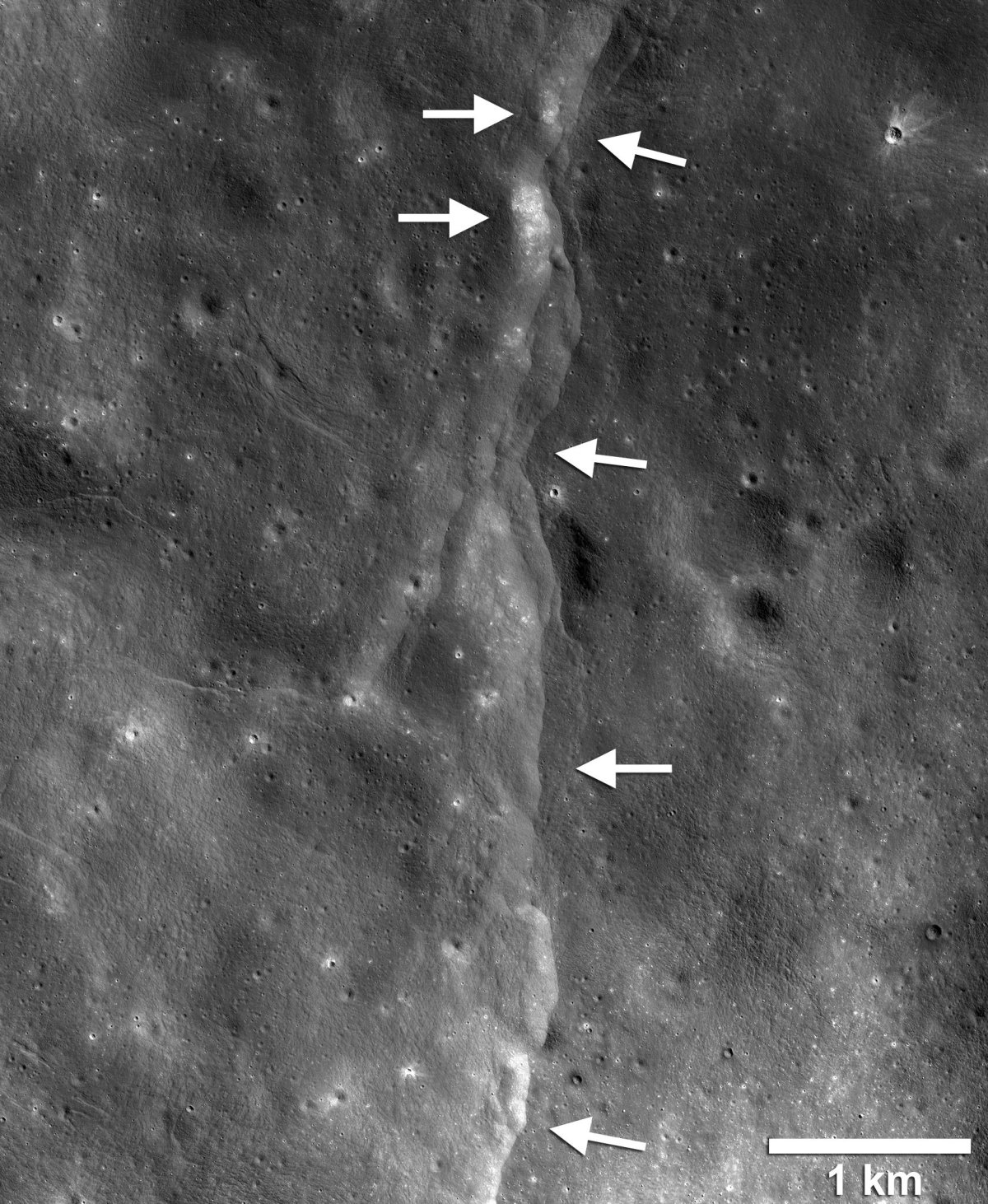
In 2010, scientists discovered that our moon had been shrinking as its interior cooled down—and may still be getting smaller. Using images from NASA's Lunar Reconnaissance Orbiter (LRO), researchers discovered cliffs in the lunar crust that had formed relatively recently, geologically speaking: They could be just 100 million years old.
The findings suggested that these "cliffs," or thrust faults, had formed as a result of tectonic activity related to the moon contracting in size as it cooled.
As the moon cools and gets smaller, its crust becomes brittle and breaks up: a bit like what happens to a grape as it dries out to become a raisin. Those breaks in the surface produce thrust faults. Since it began operation a decade ago, over 3,500 of these faults have been identified by the LRO. Those that appear brighter indicate freshly exposed lunar rock, suggesting an event like a "moonquake," which is an earthquake that takes place on the moon.
In a study published in Nature Geoscience on Monday, a team of scientists examined data from the LRO and compared it to the location of moonquakes recorded during the Apollo program in the 1960s and 1970s.
Their findings indicate that these lunar earthquakes are located very near to the previously identified thrust faults, suggesting the moonquakes are the result of tectonic activity.
A team, led by Thomas Watters from the Center for Earth and Planetary Studies at the Smithsonian Institution, looked at 28 moonquakes that had been recorded by Apollo seismometers. They developed an algorithm that enabled them to get a more accurate location for the epicenters of each quake. By superimposing these new locations with data from the LRO, they were able to show that at least eight of the moonquakes took place near the thrust faults, indicating they had been caused by tectonic activity rather than meteorite impacts—another source of moonquakes.
The team also found that six of these moonquakes took place when the moon was at its farthest point from Earth. At this time, additional tidal stress from Earth's gravity means that slips along the thrust faults become more likely.

"We think it's very likely that these eight quakes were produced by faults slipping as stress built up when the lunar crust was compressed by global contraction and tidal forces, indicating that the Apollo seismometers recorded the shrinking moon and the moon is still tectonically active," Watters said in a statement.
Nicholas Schmerr from the University of Maryland, one of the study authors, added: "You don't often get to see active tectonics anywhere but Earth, so it's very exciting to think these faults may still be producing moonquakes.
"For me, these findings emphasize that we need to go back to the moon. We learned a lot from the Apollo missions, but they really only scratched the surface. With a larger network of modern seismometers, we could make huge strides in our understanding of the moon's geology."
Uncommon Knowledge
Newsweek is committed to challenging conventional wisdom and finding connections in the search for common ground.
Newsweek is committed to challenging conventional wisdom and finding connections in the search for common ground.
About the writer
Hannah Osborne is Nesweek's Science Editor, based in London, UK. Hannah joined Newsweek in 2017 from IBTimes UK. She is ... Read more
To read how Newsweek uses AI as a newsroom tool, Click here.








